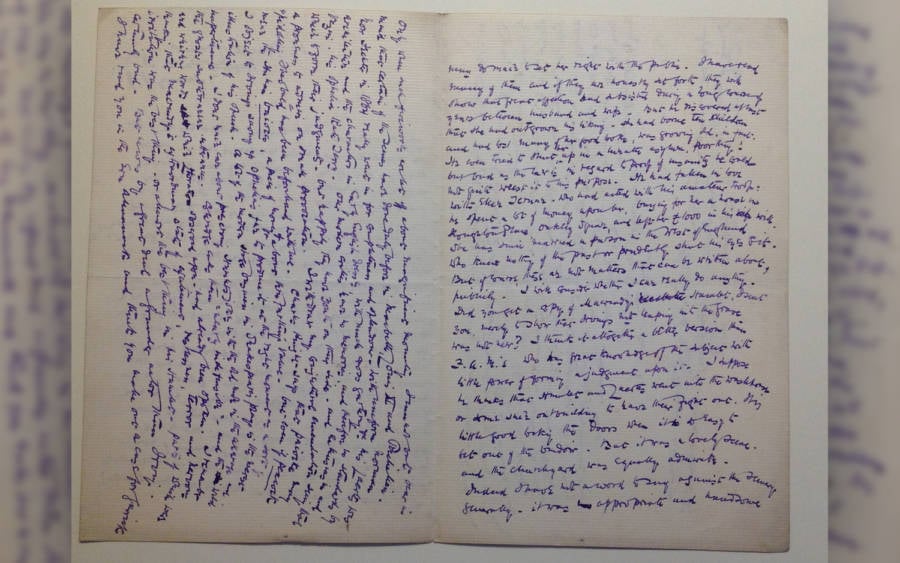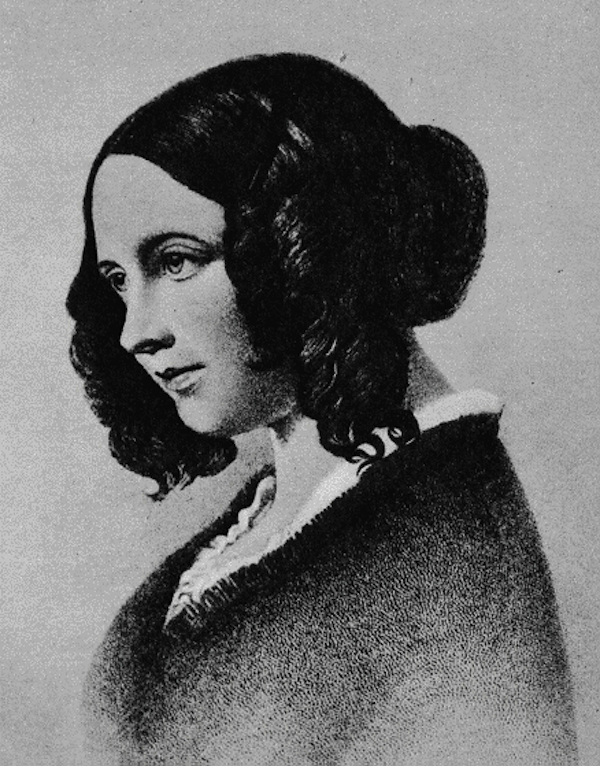In the midst of a messy divorce, Charles Dickens tried to have his wife Catherine Dickens committed to an asylum so he could move in with his young mistress.

Harvard UniversitySome of the newly-discovered letters between a journalist and family friend of the Dickens’.
The dissolution of the 22-year marriage between Charles Dickens and his wife, Catherine Dickens, has been well-documented — as has the famed author’s cruelty towards his wife. But as a slew of newly discovered letters show, Dickens was petty enough during his separation that he went so far as to try to have his sane wife committed to an asylum.
The trove of 98 letters depicts just how precise and cunning the writer was in his attempt to pivot his romantic life from Catherine Dickens to his new mistress without repercussions, Smithsonian Magazine reported. He went so far as to try to gaslight his own wife.
The Marriage Of Charles And Catherine Dickens Falls Apart
At the time of their separation, the author penned a letter to his agent claiming that it was Catherine’s idea to move out and that she had “a mental disorder under which she sometimes labors.”
The letter eventually found its way to publication where it became gossip for the public. Some say the Great Expectations author even approved this exposure in order to help control the narrative around his separation and unofficially label his ex-wife as a burden who could no longer be helped.
In the early years of their marriage, the writer would address his wife as “my dearest Life,” and lovingly call her “dearest darling Pig” in letters to her, but this all quickly shifted when the author began an affair with an 18-year-old actress. After meeting the new young object of his affection, Ellen Ternan, the writer divided his marital bedroom in two before officially separating from Catherine, an unorthodox action in that time.
Catherine, meanwhile, was busy reconciling no longer living in her family home where she had raised her ten children. Catherine Dickens’ version of events has thus, until now, never been considered.
The letters were within a 2014 auction catalog which caught the eye of University of York professor John Bowen, an academic who specializes in 19th-century fiction. “As far as I know, I was the first person to analyze them,” said Bowen. “I’ve not found any other reference.”

Wikimedia CommonsCharles Dickens, 1867-1868.
The letters chronicle an exchange between a family friend and neighbor of Dickens, Edward Dutton Cook, and a journalist in which the two explore the Dickens’ relationship and separation through a correspondence Cook had with Catherine the year she died in 1897. After sorting through the letters at the Harvard Theatre Collection in Cambridge, Bowen found a significant amount of evidence that would tip the historical scales in Catherine’s favor.

Public Domain PicturesA drawing of the author at his writing desk in his library.
“He (Charles) discovered at last that she had outgrown his liking…He even tried to shut her up in a lunatic asylum, poor thing!” Cook wrote.
Catherine Dickens and Edward Dutton Cook were good friends, which adds quite a bit of credence to the validity of the letters. Bowen said he believed the wife of Charles Dickens allegations against her husband, that they’re “almost certainly” true and make “a stronger and more damning account of Dickens’ behavior than any other.”

Wikimedia CommonsCatherine Dickens, wife of Charles Dickens and mother to 10 of his children.
The discovery that Charles Dickens tried to institutionalize his wife is certainly shocking, but it is all the more so because there was evidence that people had known about this behavior years before. Indeed, researchers had long known that Catherine’s aunt, Helen Thompson, claimed that the author had tried to convince her into making Catherine’s doctor diagnose her as mentally unsound — but Thompson’s record was dismissed as a forgery.
Bowen is also convinced that he has found the very doctor who refused to lock Catherine up — a short-lived friend of Charles Dickens and an asylum superintendent named Thomas Harrington Tuke. Six years after Catherine’s separation in 1864, Charles referred to Tuke in retaliation as a “Medical Donkey”.
Bowen’s substantial discovery of primary evidence only serves as further support for this bizarre, imbalanced moment in the Dickens’ relationship.

Wikimedia Commons“Catherine Dickens” oil painting by Daniel Maclise, 1847.
Dickens’ idea of sending his wife to an asylum wasn’t an isolated incident, either. His friend, Edward Bulwer-Lytton, actually managed to do just that with his own wife, Rosina Bulwer-Lytton, and have her officially certified as a lunatic.
Bowen is aware that these disconcerting truths about Charles Dickens will make for “very uncomfortable reading” for his devotees.
After all, the writer was so publicly against Britain’s treatment of the impoverished that he established safe houses for homeless young women, visited insane asylums in both the U.K. and the U.S. and called for more humane treatment instead of the “chamber of horrors” these institutions were at the time.
Unfortunately, even literary geniuses are complex human beings who are themselves capable of the cruelty they denounce. Though the treatment of women as hysterical burdens back in the time of Catherine Dickens was certainly an inspiration to the writer’s strategy, the blame for actively trying to do such a thing at all lies squarely on his own shoulders.
After reading about Charles Dickens’ attempt to send Catherine Dickens to an insane asylum, learn about the shocking labor practices that were legal in Charles Dickens age. Then, read James Joyce’s filthy letters to his wife.





